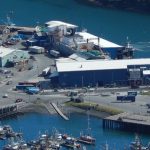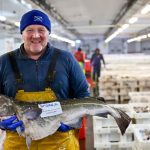The results of a survey of the spawning biomass of orange roughy off eastern Tasmania have just been released, indicating that orange roughy stocks are healthy.
According to the South East Trawl Fishery Industry Association (SETFIA) a survey was carried out on areas off eastern Tasmania where orange roughy aggregate and spawn. Under contract to SETFIA, the Commonwealth Scientific and Industrial Research Organisation (CSIRO) surveyed St Patrick’s Head and St Helen’s Hill.
CSIRO use an acoustic optical system (AOS), a device that emits multiple frequency signals to accurately calculate the amount of fish present in aggregations.
This latest survey featured a new net attached AOS that was built to improve reliability and safety as well as new broadband technologies. The AOS was launched off a boat trailer at Burns Bay in St Helens where a tender transported it to the survey vessel.
The 2016 orange roughy acoustic survey is the fifth in the series since 2006 and has found that the observed spawning biomass of orange roughy at the main spawning site, St Helen’s Hill, is double than that observed in 2013. Based on AOS and other surveys from 1999 to 2016, the results of the latest survey show that the fishery continues to recover and that the small allowable catch is sustainable.
The data from the recent AOS survey will form part of this year’s orange roughy stock assessment and will inform the AFMA Commission’s total allowable catch setting process for the 2018/19 fishing season.









